In Extremis is a shmup in which you play through various genres of art and music in a rather literal sense. If that sounds weird, well, In Extremis is a very strange game. While this is an entirely competent shmup filled with secrets, unlockables, and multiple paths, its true strength lies in being a visual marvel and an auditory delight where each stage is radically different from any other.
In terms of mechanics, In Extremis is on the simpler side. You choose two out of up to twelve weapons to bring with you at the start of each run. You can’t upgrade weapons, but many of them do something different based on if you are tapping or holding down the button tied to that weapon; there are buttons which simulate rapidly tapping when held down so you don’t need to worry about your finger getting tired. Your hitbox consists of the ship’s cockpit this time around, making it slightly larger than in most bullet hells, but still significantly smaller than your ship as a whole. Even though there’s a button to slow down your movement for more precision, I almost never used it since it doesn’t affect your weapons and bullets in In Extremis tend to come in fast bursts rather than in slow, densely-packed patterns.
Scoring is an important part of virtually any shmup and it would be impossible to address the scoring system here without also discussing Drive Mode. As I said earlier, In Extremis isn’t a complicated game in terms of mechanics and this is especially true of scoring. Enemies give points when they die and contribute to increasing your score multiplier up to a maximum of x9. It doesn’t take much to get up to the max multiplier, but it will rapidly decrease when you’re not killing enemies and it will reset completely if you die. This multiplier doesn’t affect boss fights, though you do get a point bonus if you kill a boss within its ‘par time’. Enemies don’t drop collectibles so maintaining this multiplier is the only thing you need to worry about in each stage.

Beyond killing enemies, the two ways to maintain your score multiplier are grazing the Drive Mode. Letting bullets graze your ship without touching your hitbox prevents the multiplier from dropping, which can be useful if there are no weak enemies around. There is no bomb system this time around and instead you have Drive Mode. A bar filled whenever you kill an enemy and once this bar is completely full you can press a button to enter Drive Mode for a few seconds. Your multiplier can’t drop while in this mode and you can still increase it by killing enemies.
While saving up your Drive meter to maintain a high multiplier between enemy waves might be useful, you get additional points for any enemies killed in this mode as long as you don’t get hit until it expires, allowing for some point variance. Beyond affecting your score, Drive Mode temporarily turns your weapons into far more powerful variants and will save your life if you get hit; getting hit immediately ends Drive Mode and sets your multiplier back to one. Overall, Drive Mode adds in some degree of variance to your final score, but shmup experts will otherwise be able to get a perfect run of each stage as long as they kill every enemy, maintain their score multipliers, and kill the boss within its par time without dying for bonus points.
The weapon variety here is exceptionally good. Of the twelve weapons, you only initially have access to two, though they are rather good ones. The first of these, Force of Many, is a standard spread shot while tapping, a focused shot when holding, and a very strong spread shot while in Drive. In other words, it’s basically a combination of the two most common types of weapons in vertical shmups, making it effective even if it’s not particularly flashy. Even though you can take any two weapons with you, I almost always end up taking along Force of Many for its versatility.
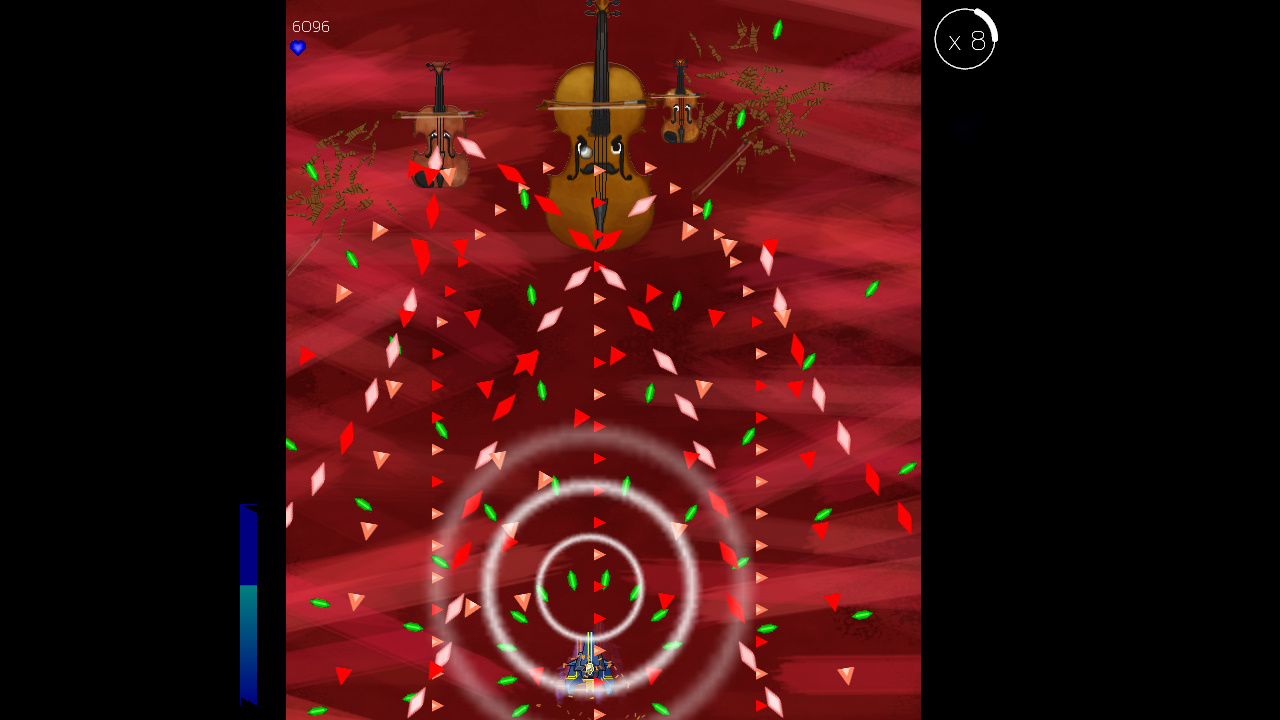
The second initial weapon, Oblivion Drum, is more involved and complements Force of Many well. This weapon sends out a single, large bullet which explodes when it touches an enemy. The twist here is that the explosion leaves behind a circular shockwave for a while which can continue to damage larger enemies and destroy strings of smaller enemies that fly into it. Oblivious Drum requires a little finesse to use to its full potential because nothing happens when you hold down the button. Instead, tapping the button while a bullet is already on the screen will detonate it, allowing you to set traps for fast enemies or to damage tougher foes with the shockwave from the side. The Drive variant is also very nice as it makes the shockwave stronger and many times larger, allowing you to eliminate virtually everything on the screen.
I’m definitely not going to cover the remaining weapons in as much detail as the first two, especially since as of this writing I still haven’t unlocked two of them, but it’s worth noting that they can fit just about any playstyle. To begin with, nine of these weapons are tied to beating stages without using a continue. The first stage and the last stage of In Extremis don’t reward you with weapons, though the tenth unlockable weapon is earned by beating the game regardless of continue usage.
A surprising number of these weapons support close combat, such as an energy sword and a damage aura which gets stronger while you hold the button down, but will kill you if you keep it up for too long. Others are more standard long range weapons like a periodic laser and bullets which curve as you move. There are even a few particularly weird weapons thrown in like a turret that you can position anywhere on the screen (it turns into a ship that moves around and seeks out enemies in Drive mode) and a pair of energy hammers which deal massive contact damage and reflect bullets, but which have a notable cooldown time. Trying out different combinations of weapons can add a lot of replay value and it’s often fun to experiment with the more bizarre combinations even if they aren’t necessarily the most effective ones.
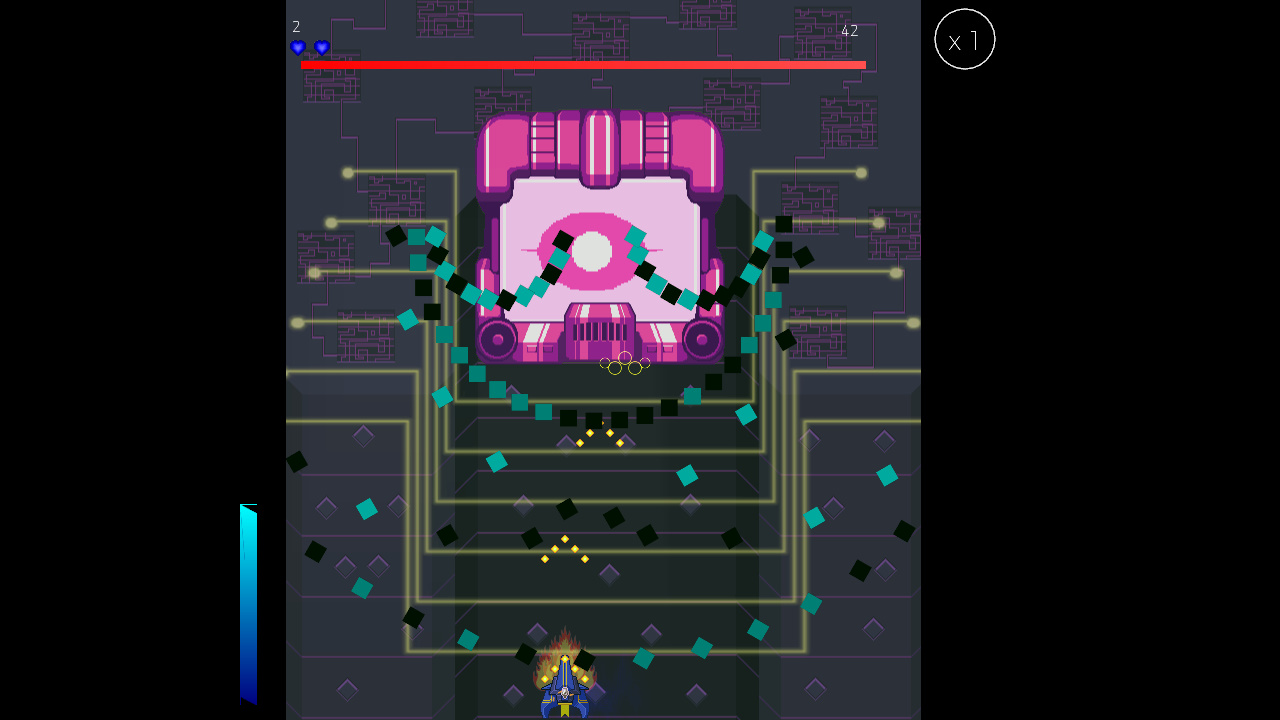
Let’s talk about progression because there are several layers of here. There are a total of 11 stages and a single run consists of going through five of them. The first and final stage are always the same while the other nine stages are divided into three sets of three. You can choose any stage from a set regardless of the stage you chose in the previous set. Additionally, I’ve seen mentions of a hidden twelfth stage and a ‘Full Loop’ mode, which I assume allows you to go through all 11 stages in a single run; I assume at least one of these is tied to defeating the final boss after unlocking every weapon, but as of this time I have not personally managed to unlock either.
There are three other types of progression beyond simply beating the game. Your score at the end of each run is used as experience points to increase your rank. The max rank is ten and you get one additional continue per rank; even if you’re terrible at the game you’re probably going to be able to beat it with ten continues and four lives per continue, though you can adjust your continues and lives in the Options menu. I’ve already covered unlocking weapons, but it’s worth noting that you can individually select any stage you’ve visited (even if you haven’t beaten it) and this still counts towards weapon unlocking. Considering how difficult the final set of stages can be even on the “Easy” setting, I am very glad that there’s a way to challenge them for their weapons without starting from the first stage every time.
The final form of progression is the plot itself and this is certainly the strangest one, especially by shmup standards. There’s an opening cutscene, but the majority of the plot is found within 24 “Secret Files”. To unlock these files, you need to locate and destroy invisible, pixel-like squares in each stage and collect an orb that falls out of them. These invisible capsules only appear when you hit them and they’re often in tricky locations, making weapons with good range very useful when hunting them down.
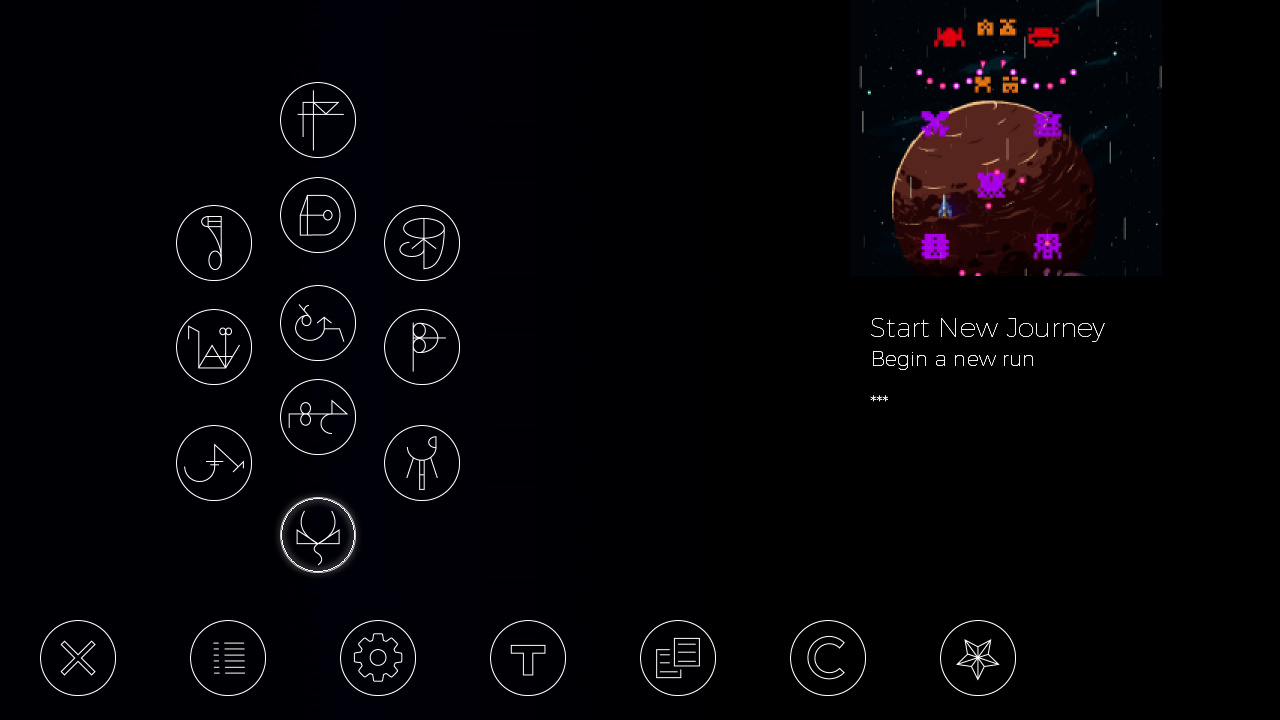
Every stage has anywhere from two to four containers and they are yours forever once you take their contents. On the plus side, the story they reveal is a fascinating one taking place in a futuristic, dystopian society and, for the player’s convenience, markers indicate the total number of containers in each stage and turn into stars as you collect them. Like with weapons, you can also collect these by tackling stages individually. Unfortunately, it seems like there is an oversight here (or I’m not understanding something) because the markers transform into stars in order from those in Stage 1, then Stage 2-A, then Stage 2-B, and so on regardless of which containers you’ve obtained, making it necessary to manually keep track of how many you’ve collected in each stage.
The biggest selling point In Extremis has is how varied and memorable its stages are. Variety is the key word here because nothing is shared between these stages. Every single one of the 11 stages here has its own, completely unique set of enemies and art assets as well as a unique song; even the bosses each have their own themes. Beyond aesthetic variety, most stages have segments which change up the gameplay in some way, often tied to their theme. For example, 2-A, Primordia, has segments where the screen scrolls horizontally, 3-B, Nostalgia of the Infinite, has clocks which create spaces of slow or fast time, and 4-B, Danse Macabre, sometimes has you navigate a narrow path of light as hidden horrors attack you from the darkness.

The aesthetics really are the main focus here though. Often, this is a very good thing. Beyond each stage having unique assets, every stage has a unique style. The very first stage has you fighting Space Invaders-style aliens against a generic space background while stage 4-C has a war theme and has a 16-bit style with enemies attacking you from the ground and excessive amounts of blood. 3-C, Ewige Blumenkraft, is definitely one of my favorites. Themed around a drug trip, this stage is very colorful and has flat, simplistic enemies including Illuminati symbols, flower petals, and circles which form ‘petals’ of bullets that explode outward if you destroy them. The boss of 3-C is a “third eye” in the forehead of a sort of Día de los Muertos skull which can only be defeated by grazing its bullets and, in keeping with the general “peace and love” theme here, there’s an achievement for beating this stage without dying and without firing a shot. While I certainly have my favorites, the other stages are all equally varied and fantastically bizarre; some stages are better designed than others in terms of gameplay, but I greatly enjoyed flying through all of them.
I’ve been focusing on the graphical side of the aesthetics, but the soundtrack also pulls its weight. Every song is chosen to fit its stage perfectly and the range of genres on display here is phenomenal. Classical, jazz, chiptune, techno, and more are all on full display here; there are probably at least as many musical genres in this game as there are stages. From loud and upbeat to atmospheric and subdued, the music greatly enhances every stage. The developer noted in a Steam forum post that “the songs in the soundtrack are either royalty-free, public domain, or licensed only for the game, and each one comes from a different artist” in order to explain why, rather regrettably, the soundtrack is probably never going to be released as DLC, but this statement also happens to convey just how much musical variety there is across the board here.
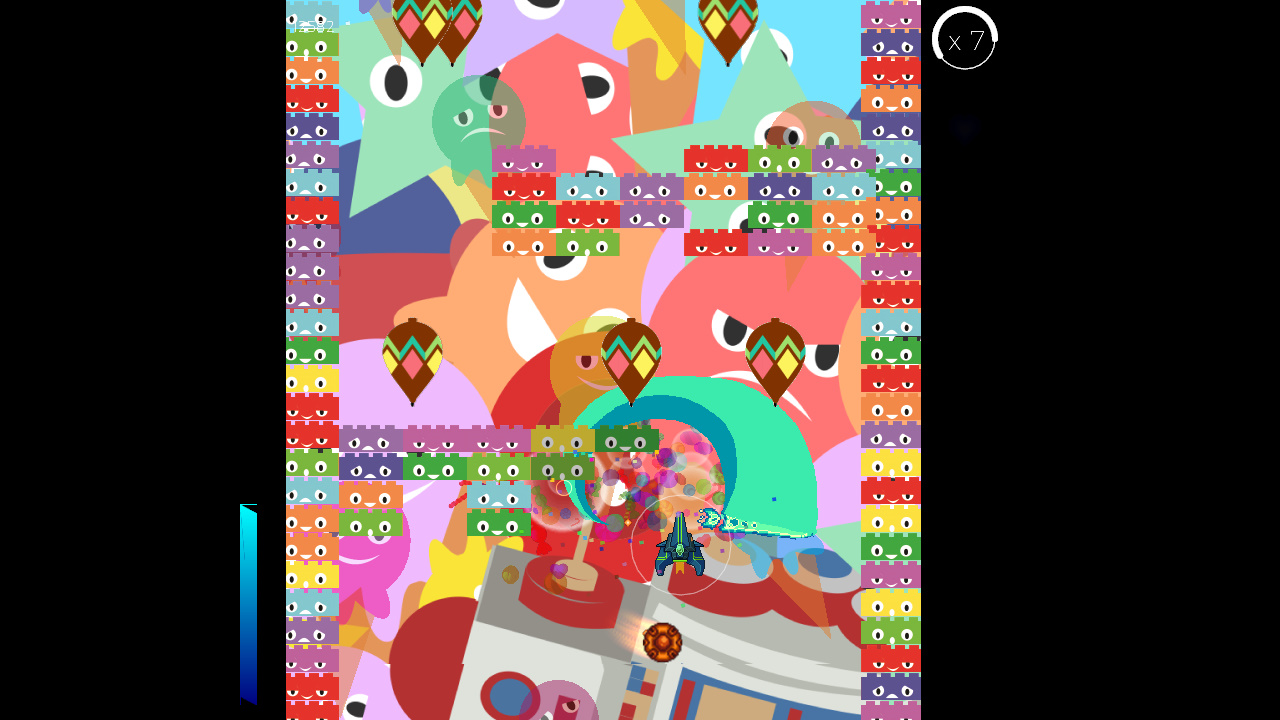
Even though aesthetics are In Extremis‘s biggest strength, they are also its greatest weakness. While it’s absolutely not an issue in every stage, there are moments when the aesthetics get in the way of the gameplay. 3-B is far and away the biggest offender here. Based on the unusual theme of antique collecting, the first half has a black and white look where clips from old movies scroll by on a grainy background screen; I love the look and this part isn’t an issue. Things go south when the stage transitions into the second half, themed around toy collection. This part of the stage has large, vibrant toys in the background and translucent ice cream cones floating in the foreground, a colorful combination which makes it a nightmare to keep track of the small, flashing red bullets shot by enemies.
Overly colorful, animated, or detailed backgrounds pose a problem in a few other stages, but never to anywhere near the same length and degree as they do in 3-B. The dark sections of Danse Macabre (4-B) are also occasionally an issue as near the end tentacles start reaching towards your ship and they are rather difficult to see even while in the light, making it far and away the stage I’ve lost the most lives on. In Extremis is still a good shmup in terms of gameplay, but it values style over substance and that occasionally trips it up.
Boss fights are a bit of a mixed bag depending largely on your weaponry and if you have a full Drive bar. You can’t generally fill up your Drive meter during a boss fight, but if you have access to Drive mode and a set of strong weapons you can take off a massive chunk of nearly any given boss’s health bar in a matter of seconds, trivializing the fight. On the other hand, if you don’t have access to a full Drive bar and/or some of the more devastating weapon combos, each boss has a wide variety of attacks and some sort of a second phase which they enter at around half health. Some boss gimmicks can get pretty creative and the true final boss in particular has a fantastic gimmick during its phase transition. Even though they are definitely not the focus here, these are generally rather good boss fights and I wish the game didn’t make it quite so easy to kill its bosses before they get a chance to show off everything they have to offer.
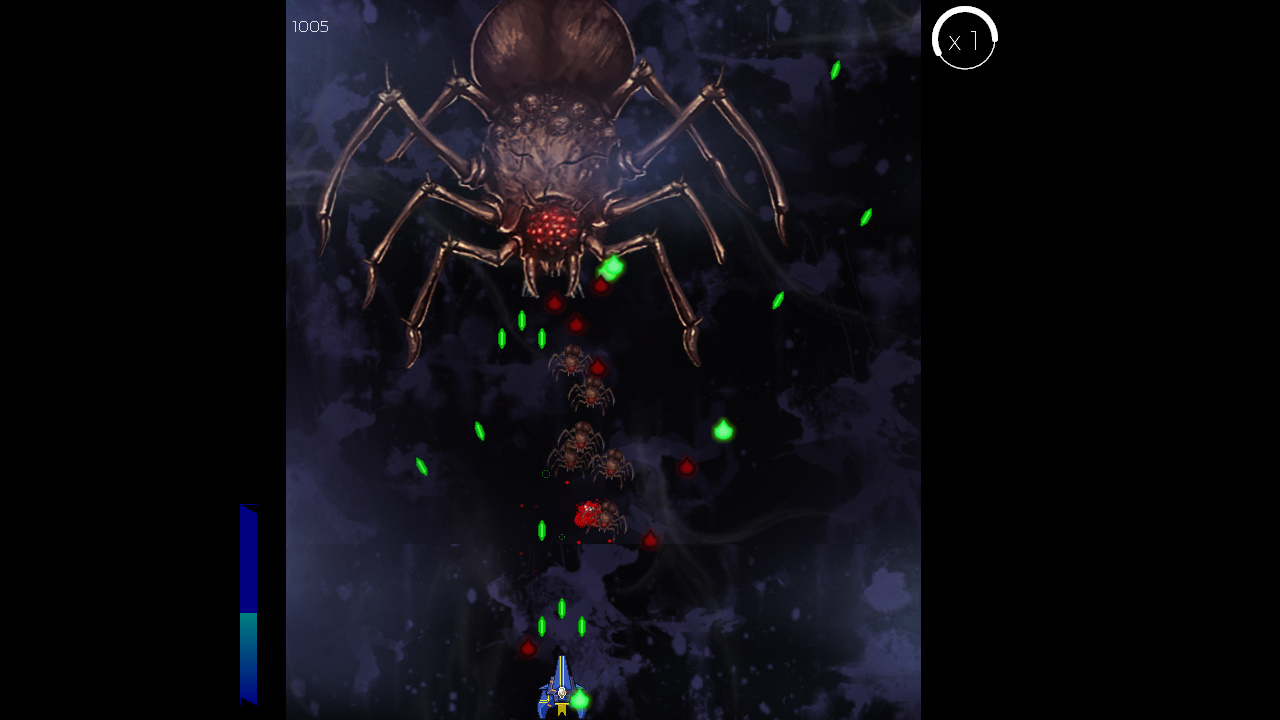
As is usually the case, there are a few last points I want to address before bringing this article to a close. This time around I want to take a moment to point out that this game has two types of warnings attached to it which really are worth paying attention to, especially for anyone potentially interested in streaming or recording In Extremis. The game begins with an epilepsy warning about flashing images and colors. While I usually take such warnings with a grain of salt, this time around I’d say the warning is one worth paying attention to if you or anyone watching has epilepsy as a few of the stages have parts where the background intensely flashes through colors, especially Nostalgia of the Infinite (this poor stage really can’t seem to catch a break).
Secondly, there is a mature content warning tied to the Steam page and I’m fairly certain this warning in its entirety exists due to 4-A, Of Lurid Daydreams. This stage, as you might be able to guess from the title, is themed around sex and, even though the Venus de Milo statue in a dominatrix outfit is about as “explicit” as this stage gets, there’s enough rather suggestive imagery and enemy design here that you would probably want to avoid streaming this stage or otherwise playing it around a younger audience.
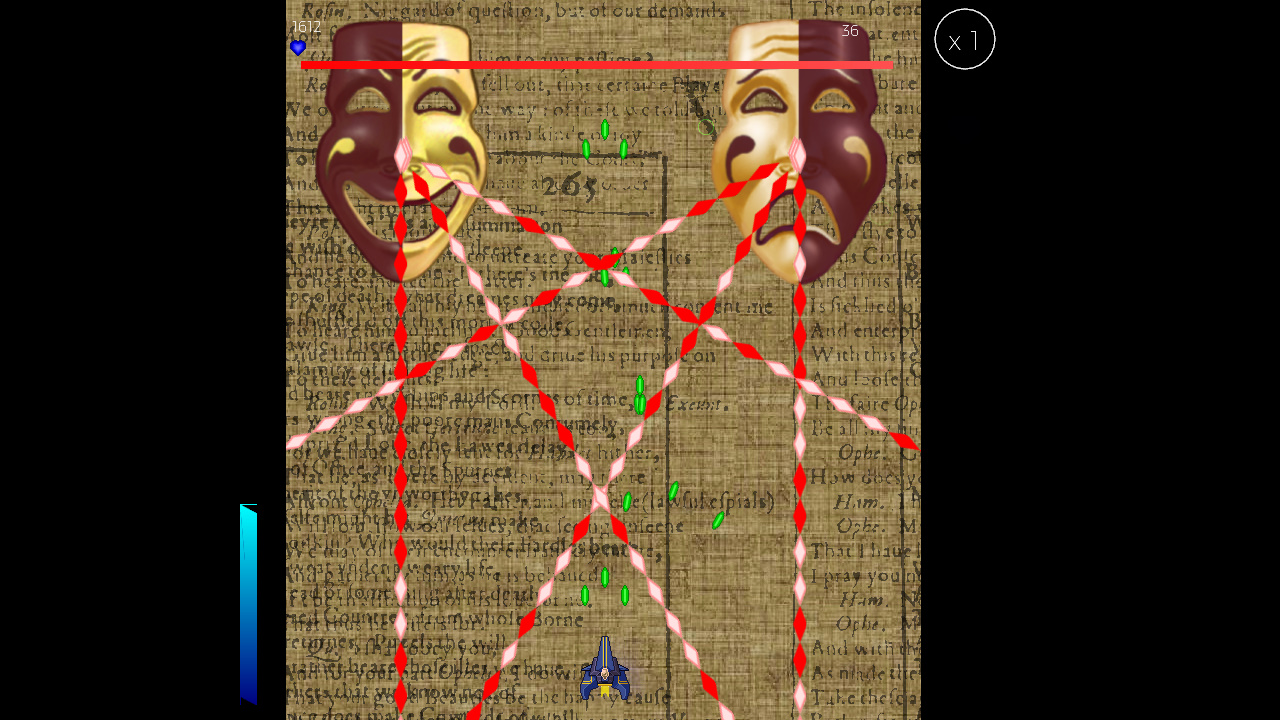
From a purely gameplay perspective, In Extremis is a decent shmup with some neat features, good replay value, three very different difficulty settings, and a few generally minor issues. There are plenty of shmups out there with more intricate scoring systems and more polished stage design. However, to judge In Extremis only by its gameplay would be a grave injustice as it is so thoroughly attached to its aesthetics that the stages themselves are built around their unique styles. In Extremis is best viewed as a whole experience and this is absolutely the type of daringly experimental and delightfully bizarre experience that the shmup genre desperately needs more of in an otherwise endless sea of ships shooting aliens and flying anime girls shooting each other.